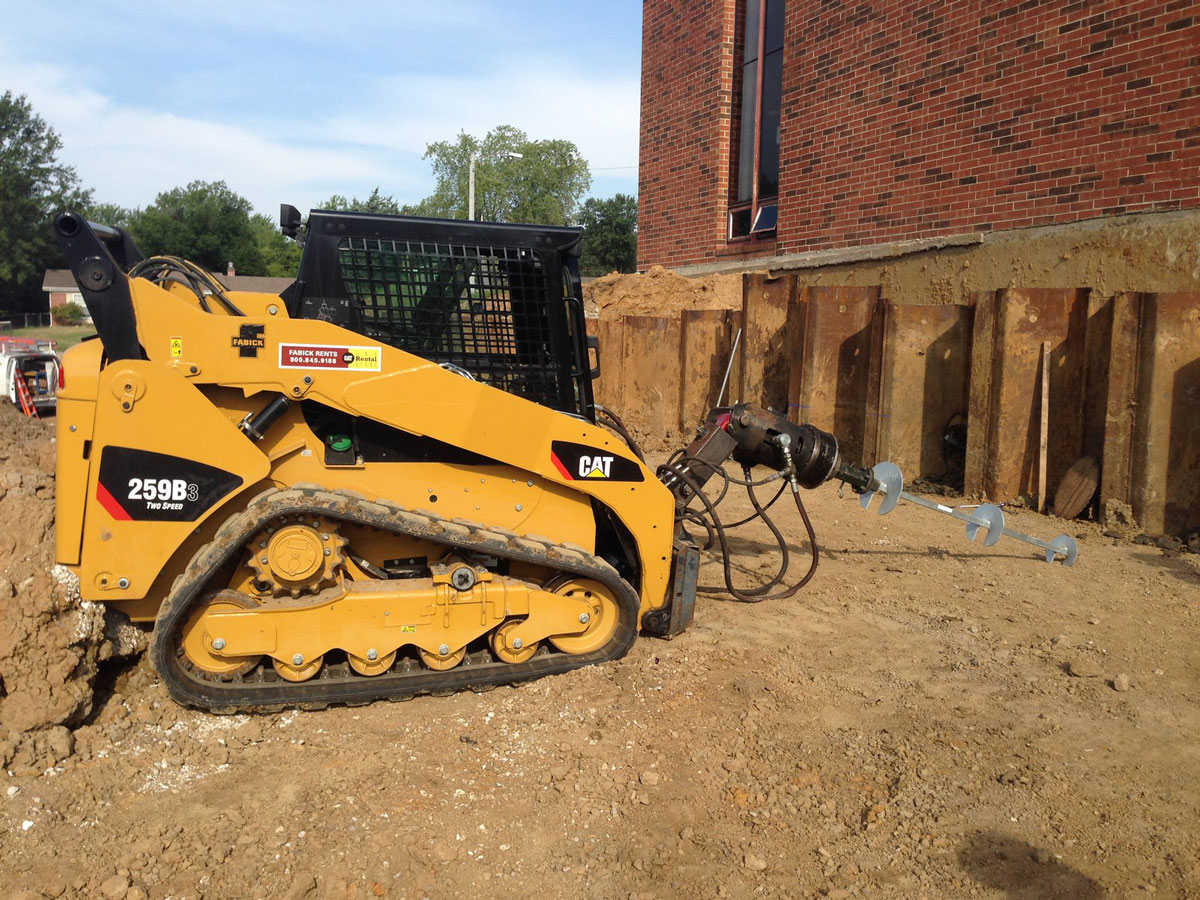
Our soil screws, or ground screws, provide temporary or permanent holding or guying when building or repairing foundations.
Stand strong with the Intech team knowing your clients’ projects are dug in. Partner with us for success.
Soil screw retention walls offer a faster alternative to traditional grouted soil nails, particularly in low shear strength soils. The capacity of each soil screw is directly related to the applied torque, providing a clear understanding of its load-bearing capacity.
The use of helical soil screws in the retention wall system reduces performance uncertainties and costs associated with grouted soil nails. Their easy storage, reusability, and minimal equipment requirements contribute to overall cost savings.
Soil screws are easy to install and require minimal soil disturbance. The true-spiral helices and evenly spaced bearing plates ensure a secure and stable foundation. This results in faster and cleaner installation processes.
Soil screw retention walls can be installed in limited access areas, making them ideal for projects with space constraints or challenging site conditions. The use of common equipment, such as mini-excavators and skid-steer loaders, facilitates easy and efficient placement of the soil screws.
Soil screw retention walls can be installed in limited access areas, making them ideal for projects with space constraints or challenging site conditions. The use of common equipment, such as mini-excavators and skid-steer loaders, facilitates easy and efficient placement of the soil screws.
Soil screw retention walls can be installed in limited access areas, making them ideal for projects with space constraints or challenging site conditions. The use of common equipment, such as mini-excavators and skid-steer loaders, facilitates easy and efficient placement of the soil screws.
Soil screw retention walls, in conjunction with shotcrete facing, offer a superior method for reinforcing the earth and constructing gravity walls. This innovative approach provides a cost-effective and time-efficient alternative to traditional soil retention systems.
By utilizing soil screw retention walls, you can eliminate the performance uncertainties and costs associated with grouted soil nails, especially in low shear strength soils. The load-bearing capacity of each soil screw is directly correlated to the applied torque, providing a clear understanding of its strength. This not only enhances performance but also helps to reduce costs.
Soil screws are typically installed at shallower depths compared to helical tieback anchors while retaining similar soil masses. The helical wall screw anchors feature bearing plates distributed along their entire length, while the true-spiral helices facilitate easy installation with minimal soil disturbance. Crucially, soil screw anchors do not require tensioning after installation; they serve as passive elements. Once installed, a soil screw retention wall securely holds the soil as a single mass with sufficient internal stability. Monitoring the torque during installation accurately indicates the expected holding capacity, ensuring predictable and reliable results.
The installation process for soil screws is swift and efficient, thanks to the use of common equipment such as mini-excavators and skid-steer loaders. This allows for quick rotation and placement of the soil screws. The size and grid spacing of the wall screw anchors are tailored to local soil conditions and specific load requirements, further optimizing their performance.

Tim is the President of Intech Anchoring and has 25 years of experience in the Civil Engineering and Geostructural Industry. Tim has developed extensive industry knowledge by working to support the needs of specialty contractors at each and every business level. Tim’s diverse industry background has given him exposure to a wide variety civil construction projects, ranging from the simplest residential applications to the most complex commercial and industrial projects. Coupled with a highly skilled and educated team, Tim focuses on providing the highest quality products and solutions to Intech Anchoring’s customers in order to consistently exceed expectations.